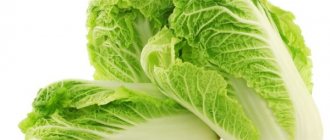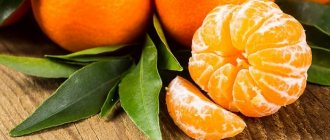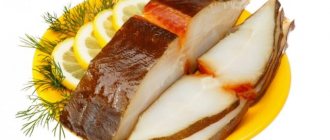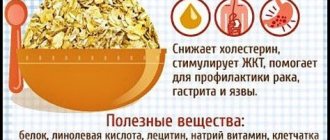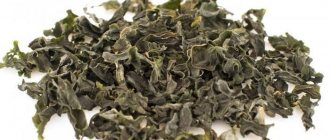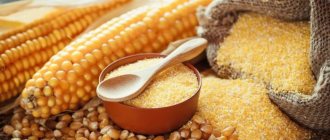Biological description
White cabbage is a member of the cruciferous family. Its shape is round, the stem is tall, the leaves are dense, wrapped inward. This garden crop is grown in different parts of the world. It is eaten in any form: fresh, pickled, stewed, fried, boiled. A good harvest of cabbage is obtained in countries with a moderately cool climate.
The most common varieties of white cabbage are early, middle and late.
Content:
- Biological description
- Origin story
- Chemical composition and nutritional value
- Beneficial features
- Harm and contraindications
- White cabbage in folk medicine
- White cabbage in cooking
- White cabbage in cosmetic procedures
- Rules for selection and storage
Early cabbage varieties include Pharaoh, Golden Hectare, Aladdin, Nakhodka and Yaroslavna. Popular varieties of medium cabbage include Podarok, Slava, Belorusskaya and Megaton. Late cabbage varieties include Snow White, Sugarloaf, Valentina, and Extra.
It is noteworthy that early varieties of the crop are poorly stored due to their delicate leaves. Therefore, early-varietal cabbage is not prepared into preparations, but is immediately consumed as food. Medium-grade cabbage is used to prepare dishes for short-term storage. Late varieties of cabbage are used to make preparations for long-term storage. Fresh fruits can be stored until the end of winter, retaining all their beneficial properties.
Good Dutch varieties occupy a special place. They are perfect for the local climate, high-yielding, juicy and delicious in taste. Popular varieties include Bronco, Musketeer, Ronco, Bingo and Python.
How many calories are in cabbage
Cabbage has been known since the third millennium BC. Thanks to its unpretentiousness, the vegetable grows almost anywhere on the planet. There are more than a hundred varieties of cabbage. But among them, the most common and popular is the white cabbage.
The low calorie content of cabbage allows it to be included in all kinds of diets. Nutritionists recommend eating the product fresh for anyone who wants to lose extra pounds.
Photo: woman.ru: UGC
White cabbage helps improve metabolism and eliminate cholesterol.
The nutritional value of fresh cabbage per 100 g of product is only 27 kcal. This quantity contains:
- proteins - 1.8 g;
- fats – 0.1 g;
- carbohydrates – 6.8 g.
Depending on how cabbage is prepared, its nutritional value per 100 g will be different:
- Stewed cabbage - 50.7 kcal. Protein - 1.6 g, fat - 2.9 g, carbohydrates - 6.4 g.
- Sauerkraut - 19.0 kcal. Proteins - 1.8 g, fats - 0.1 g, carbohydrates - 4.4 g.
- Boiled - 21.2 kcal. Proteins - 1.6 g, fats - 0.0 g, carbohydrates - 4 g.
- Steamed - 27 kcal. Proteins - 1.8 g, fats - 0.8 g, carbohydrates - 6.8 g.
- Fried - 50 kcal. Proteins - 1.8 g, fats - 3.4 g, carbohydrates - 6.6 g.
Photo: woman.ru: UGC
In addition to the small amount of calories, this light product contains many vitamins and microelements necessary for the health of every person.
Cabbage contains:
- vitamins B1, B2, B9;
- folic acid;
- pantothenic acid;
- vitamin PP;
- phosphorus, calcium and potassium;
- sulfur, magnesium, zinc;
- iron and iodine;
- easily soluble sugars - sucrose and glucose;
- cellulose.
Cabbage also contains rare vitamin U (S-methylmethionine), which has a beneficial effect on the body in case of stomach ulcers, duodenal disease, gastritis and colitis. But you can’t eat cabbage for these diseases at the acute stage.
Cabbage is also rich in vitamin C - there is 50 times more of it in late varieties than in potatoes. The content of this vitamin in cabbage is greater than in citrus fruits, and it remains in the body for a long time.
Origin story
White cabbage can be considered one of the oldest types of garden crops. According to research by paleobotanists, it was grown on the Mediterranean coast about 4,500 years ago. On the territory of Ancient Iberia, wild cabbage was first grown. This culture then spread to Ancient Greece, Ancient Rome and Ancient Egypt. Later, residents of Transcaucasia and the Balkans appreciated its benefits and taste. Presumably, sauerkraut began to be fermented in the 9th century. Since then, travelers for a long time took sauerkraut with them on the road, along with honey and salted mushrooms. It is noteworthy that the ancient reference book of Kievan Rus “Izbornik Svyatoslav” of 1076 described the correct storage of cabbage as a food product.
Dietary recipes
Some people are tirelessly searching for dietary dishes in order not to gain weight, while others simply love to eat delicious food. Food made from cabbage is suitable for both. Although it is dietary, it is not without taste.
There are many different ways to stew cabbage. But nowadays people are so busy that they want to find recipes that do not require much time to prepare. A fashionable and popular device will come to the rescue - a multicooker!
Let's list a few simple ways to prepare cabbage.
Recipe No. 1
To stew cabbage you will need:
- half a medium-sized head of cabbage;
- 1 head of peeled onion;
- 6 pcs. medium sized tomatoes;
- 2 pcs. peeled carrots;
- 0.5 l. water;
- 2 pcs. pepper (bell pepper);
- spices to taste.
First, finely chop the cabbage, grate the carrots on a coarse grater, cut the onions and peppers into thin half rings, and the tomatoes into cubes. Next, put the vegetables together in a slow cooker, add water, spices and mix. Then you should close the lid of the device and set the extinguishing mode on the display, set the cooking for 40 minutes. After this time, the vegetables will be cooked.
The dish can be used as a side dish for meat. But if you stick to a low-calorie diet, you can cook rice or buckwheat with it.
Recipe No. 2
To stew cabbage with chicken you will need:
- 500 g chicken meat;
- 1 onion;
- 1 small head of cabbage or 0.5 large;
- tomato paste (fresh tomatoes will also work);
- spices to taste;
- 3 tablespoons sunflower oil;
- 0.5 glasses of water.
Carrots and onions need to be washed and peeled. Cut the onion into half rings and the carrots into thin slices. Chop the cabbage into small pieces. Wash the poultry meat, dry it, cut into small pieces. Then fry the onions and carrots in hot oil, and then throw in the chicken.
Close the multicooker lid and simmer for 5-10 minutes. Then, opening the lid of the device, add shredded cabbage with tomato paste (or tomatoes), spices, and pour water. Close the lid and cook in simmer mode for 20 minutes. Can be used both independently and as a side dish.
Recipe No. 3
To stew cabbage with zucchini you need to take:
- 0.5 kg cabbage;
- 2 small onions;
- 1 medium sized zucchini;
- tomato sauce (ketchup or fresh tomatoes will do);
- 1 large carrot (or 2 small ones).
When stewing in a slow cooker, first prepare the zucchini for cooking: cut in half, remove seeds and pulp. Then peel off the skin. If it is a young vegetable with a thin skin, you don’t have to peel it. Cut into medium sized cubes.
Next, heat the oil in a multi-cooker bowl, add thinly sliced carrots and onions. You should fry the vegetables a little while stirring. Then add shredded cabbage, zucchini cubes, adding spices and a little water. Zucchini and cabbage release their juice when stewed, so you don't need a lot of other liquid.
Then you need to mix everything well again. Close the lid of the multicooker tightly, set the simmer mode for 20 minutes and you're done!
To learn how to prepare dietary stewed cabbage, see the following video.
White cabbage is a valuable product for those who are losing weight or want to maintain their normal weight both in adulthood and in old age. If you feel hungry, munch on low-calorie fresh cabbage leaves rather than sausage sandwiches or chips.
Chemical composition and nutritional value
White cabbage contains a whole complex of nutrients and vitamins. The calorie content of white cabbage is 27 kcal per 100 grams of fresh product. The nutritional value of the product includes a high content of proteins, fats, carbohydrates, dietary fiber, organic acids, vitamins and micro- and macroelements. The vegetable contains glucose and fructose, which are considered easily digestible carbohydrates. They help saturate the body with energy. Pectin substances in the gastrointestinal tract are processed into a kind of gel that envelops the walls of the stomach, which prevents toxins from entering the circulatory and lymphatic systems. The product contains a full complex of vitamins B, , , , , and.
The vitamin U content in the vegetable helps restore the gastrointestinal mucosa after damage from peptic ulcers. This valuable vitamin was discovered in the 40s of the last century, when the composition of cabbage juice was studied. Interestingly, the name of the vitamin comes from the word ulcus, which translates as “ulcer.” Vitamin U also takes part in the synthesis of vitamin B4. White cabbage holds the record for the content of vitamin U, which is not synthesized in the body. When exposed to high temperatures, this vitamin is destroyed.
Calorie content of white cabbage salad with carrots
The calorie content of an unseasoned vegetable salad made from cabbage and carrots is up to 30 calories per 100 g of dish. If you add a little onion to the salad, season it with vinegar, salt, sugar, as well as sunflower or any other vegetable oil, the calorie content of such a salad increases to 68 units. However, since foods and dishes whose calorie content does not exceed 100 units per 100 grams are low-calorie, even such a salad can be eaten without counting the number of calories per serving.
Read: White cabbage in batter and breadcrumbs
Beneficial features
White cabbage has many beneficial properties. This unique product is able to support immunity for a long time. The content of ascorbic acid in the vegetable protects against malignant tumors in the body. Ascorbic acid retains its properties during heat treatment. A lot of it is also preserved in fermented form. Folic acid, contained in green cabbage leaves, regulates metabolic processes in the body, improves the functioning of the thyroid gland and genital organs. Folic acid is especially useful and important in the diet of women.
Tartronic acid has a beneficial effect on the gastrointestinal tract, improving metabolism. In addition to choline, it does not allow cholesterol to accumulate on the walls of blood vessels and leads to the normalization of fat processes in the body. Therefore, nutritionists advise including vegetables in the daily diet for those who want to lose noticeable weight. Tartronic acid is present only in fresh cabbage. Fructose energizes the body, the amount of which in cabbage is higher than in other vegetables. Lactic acid, which is formed as a result of fermentation of the product, has a beneficial effect on the intestinal microflora. As a result of exposure to lactic acid, the intestinal microflora is normalized in the body and putrefactive processes in it are eliminated. The phytoncides contained in the vegetable have a detrimental effect on Staphylococcus aureus.
The fiber content in the vegetable helps improve motor activity in the intestines and develop beneficial microflora in it.
Constant consumption of white cabbage benefits the body:
- strengthens the immune system;
- stabilizes acid-base balance;
- prevents the development of atherosclerosis;
- improves metabolic processes;
- removes toxins from the body;
- moisturizes the skin;
- removes excess fluid from the body.
Sauerkraut retains its beneficial properties and perfectly helps with dysbacteriosis and cleanses harmful microorganisms.
Cabbage for weight loss
Cabbage for weight loss is an indispensable product that allows you to eat varied and satisfying during your diet. How does cabbage help you lose weight? Cabbage, whose calorie content is quite low, contains coarse dietary fiber that helps remove waste, toxins, and cholesterol from the body. Cabbage for weight loss is effective due to the following properties:
- Rich enzyme composition. In addition to containing fiber, cabbage contains tartronic acid, which helps slow down (inhibiting property) the body's processing of carbohydrates and their transformation into fats. Tartronic acid is destroyed during heat treatment of the product;
- Low calorie content (the highest calorie content is cabbage stewed with meat - 160 calories).
Sauerkraut, whose calorie content allows it to be included in any dietary menu, allows you not only to effectively reduce weight, but also to replenish the balance of vitamins, micro- and macroelements. Cabbage provides long-lasting satiety, allowing you to eliminate unnecessary snacks from your diet, as well as avoid the physiological and psychological stress that inevitably arises when following many restrictive diets.
When following a diet, fresh cabbage, the calorie content of salads from which does not exceed 50 calories per 100 g, which is explained by the addition of vegetable fats, is recommended to be consumed in limited quantities in order to avoid intestinal bloating and discomfort in the gastrointestinal tract. To effectively lose weight, cabbage is recommended to be stewed, baked in the oven or boiled. For weight loss, it is recommended to cook cabbage in its pure form, without adding meat, which significantly reduces the calorie content of the dish. To prepare cabbage, the calorie content of which will be kept at a fairly low level, it is recommended to use vegetable fats (sunflower, olive oil).
Harm and contraindications
White cabbage brings great benefits to the body, however, despite this, it has some contraindications. First of all, it is contraindicated to consume a lot of cabbage for people who have increased acidity of gastric juice, as well as for those who are prone to indigestion, colitis and enteritis. Excessive consumption of this raw vegetable may result in bloating, nausea, gas, and heaviness in the stomach. The vegetable is contraindicated in patients with the acute stage of myocardial infarction.
Pregnant women should consume small amounts of fresh vegetable due to the fact that it stimulates flatulence. Conversely, it is recommended to consume sauerkraut daily in winter (about 200 grams).
Young mothers often have a question about whether white cabbage can be given to a small child. It is very useful to give cabbage to children, but it must be introduced into the menu gradually, starting from 2 years. Young children are not recommended to eat a lot of sauerkraut or salted cabbage, so as not to disrupt kidney function. When feeding infants, the effects of overeating can be transmitted through mother's milk.
White cabbage can be harmful if its stalk is consumed raw. Nitrates accumulate in the stalk, which are absorbed by the vegetable during ripening. Therefore, nitrates, sodium salts and cadmium can enter the body. Nitrates are usually hidden in the stalk and upper leaves of the vegetable.
Cabbage: benefits and harms when losing weight
Many people use this vegetable in the fight against excess weight. Cabbage is included in a healthy diet and is also the basis of diets. If you follow the regime correctly, you will lose up to 7 kg in just a week of the cabbage diet.
And if you combine other varieties of cabbage - Chinese, Brussels sprouts or broccoli - with white cabbage, it’s easy to diversify even your dietary menu.
The benefit of white cabbage is that when digesting it, the body spends less energy than it receives when consumed. Fiber, filling the stomach, gives a feeling of fullness. Therefore, the effect of the cabbage diet will be noticeable in a short time, because fresh cabbage has very low calorie content.
Photo: mirrasteniy.com: UGC
The benefits of a cabbage-based diet are:
- the intestines are cleansed of toxins;
- the processes of digestion and absorption of nutrients are normalized;
- toxins are removed from the body;
- swelling of the face goes away;
- the body rejuvenates.
A strict diet cannot be followed for more than a week. Then you should definitely take a break, otherwise you can harm your health.
Before you decide to eat cabbage for weight loss, consult your doctor. White cabbage is contraindicated for:
- myocardial infarction;
- diabetes mellitus;
- frequent diarrhea;
- enteritis.
Photo: mirrasteniy.com: UGC
The disadvantages of the cabbage diet are as follows:
- such a mono-diet requires a lot of willpower, since it does not differ in food variety;
- dishes cannot be salted;
- there is a risk of developing vitamin deficiency;
- a strong feeling of hunger, weakness, dizziness and migraine may occur;
- during the diet, performance and reaction speed may decrease;
- Long-term diet can cause intestinal dysfunction.
The effectiveness of eating cabbage in the diet has been proven. But whether to use it for the sake of one’s own beauty and health or not is up to each individual to decide. And even if you don’t have problems with excess weight, it’s worth consuming this vegetable for the sake of cleansing and rejuvenating the body.
White cabbage in folk medicine
In folk medicine, cabbage leaves are widely used to treat various diseases. Our ancestors often applied them to wounds, inflamed areas and bruises, and protruding veins. Night compresses help with this, they relieve swelling and pain symptoms.
Cabbage juice is an effective remedy. It heals duodenal ulcers, cleanses the body and helps reduce weight. A side effect of its use may be high gas formation. This is explained by the fact that the juice, as a result of a chemical reaction, breaks down rotting products in the intestines. Therefore, after drinking juice, there may be an increased amount of gases, as a result of a large number of accumulated toxins and rotting products. In turn, enemas will help remove gases and further cleanse the intestines.
Cabbage and carrot juices help cleanse the oral cavity of infections leading to periodontal disease. Homemade cabbage juice cures constipation, which often leads to skin rashes. Elimination of constipation leads to the disappearance of skin rashes. For the treatment of chronic gastritis with low acidity, liver and spleen diseases, it is useful to drink 0.5 glasses of warm juice an hour before meals. The juice is stored in the refrigerator for no more than 2 days.
When diluted with sugar, cabbage juice is an excellent remedy for a hoarse voice and chest cough. For treatment you need to take 1 teaspoon 2-3 times a day. If you mix the juice with honey, you get an effective remedy for combating respiratory diseases.
Sauerkraut juice is useful in the treatment of hemorrhoids. For treatment, you need to take 0.5 cups half an hour before meals. Gradually you need to increase the amount to 5 glasses per day. The duration of treatment is 3-4 weeks.
Eating cabbage gives good results in the treatment of gout. It is consumed fresh in salads and fresh leaves are additionally applied to pain points. Fresh leaves are also applied to sore spots for eczema, headaches, radiculitis and burns. It is effective to apply leaves with grated laundry soap to affected areas for osteochondrosis. For cancer of the stomach and intestines, you need to take a mixture of cabbage roots and seeds - 1 tablespoon is poured into a glass of hot boiled water and boiled for 10 minutes. After an hour, filter and drink 3 times a day. For liver diseases, drink 0.5 cups of sauerkraut brine with tomato juice. To treat rickets in children, a decoction of cabbage, carrots and beets is used.
How much fresh cabbage can you eat per day?
Experts recommend consuming no more than 200 grams. per day, and for pregnant women and people with gastrointestinal diseases it is better to limit the daily intake to 100 grams.
It is also not recommended to eat cabbage leaves before bed. Since it activates digestion, it can cause diarrhea, flatulence, and bloating.
The optimal time to consume dishes with cabbage is 4 hours before bedtime; only at this interval will the product be completely digested and you can fall asleep peacefully.
White cabbage in cooking
White cabbage is very popular in cooking. It is used to make delicious cutlets, soups, borscht, pies, dumplings, cabbage rolls and pancakes. It is eaten in salads, fermented, pickled, boiled, steamed, fried, baked and stewed. It is one of the best and useful preparations for the winter.
In cooking, there are several rules for properly cutting this vegetable. Leaves are removed in several ways:
- cut out the stalk and manually cut the vegetable;
- blanch;
- Place the cabbage in the microwave for 5 minutes and disassemble the leaves.
Separately, it is worth noting about the preparation of fermented product. If cabbage radically changes its taste, but is still crunchy, then it is better to eat it in a salad. If it has changed color and structure, then it is better to add it to the borscht. In this state, the acid in the vegetable goes well with the sweet beets.
Preparing pickled cabbage is very easy. For this you need 2 kilograms of cabbage, a head of garlic and 2 carrots. Dilute 1/3 cup of apple cider vinegar in a liter of water, add 2 tablespoons of salt, a glass of granulated sugar, bring to a boil and pour in chopped vegetables. Leave in a warm place for 6 hours, then put in the refrigerator.
White cabbage for weight loss: application
Dishes from garden crops in diets amaze with their diversity. The raw vegetable is more tasty; it retains all the minerals, vitamins and other useful components.
Salads are prepared from it with the addition of low-fat yogurt, sweet apples, carrots, and dried fruits. The choice of additional ingredients depends on taste preferences, the type of vegetable, and the characteristics of the diet.
Stewed cabbage with root vegetables, potatoes, and, if the diet allows, with a small amount of meat is popular. The cooking method involves simmering food for a long time without adding oil.
Steamed leaves are less tasty, but this heat treatment preserves vitamins and minerals.
White cabbage in cosmetic procedures
In cosmetology, the use of cabbage is indispensable at home. Its leaves and juice are used to whiten facial skin, strengthen hair and care for hands. To prepare a face mask, you need to take 2-3 raw vegetable leaves and pour milk (10 ml) over them, cook until soft. Make the resulting mass homogeneous and apply to the face before going to bed for 15 minutes. To strengthen hair, take cabbage, spinach and lemon juices in equal parts. This mixture is rubbed into the hair roots for 7 days before bedtime. A famous French recipe for hand care includes sauerkraut juice. It is heated and applied to the hands, then washed off and a nourishing cream is applied.
Application in cosmetology for face and hair
Cabbage is often used in cosmetology. There are a number of recipes that can help restore complexion and even slow down the aging process. The substances that the culture is full of have a positive effect on the skin and hair.
For face
If you use cabbage-based products, you can not only improve your skin health, but also make your complexion more natural.
Several recipes are popular:
For any skin type
You need to select fresh leaves from the crop, pour a glass of water over them, and bring the liquid to a boil. The broth is cooled and then filtered using gauze. A cotton swab is moistened in this solution and wiped over the face and neck twice a day.
For oily skin
To eliminate oily shine, it is recommended to use a product made from cabbage and cucumber juice. Juice should be taken in equal quantities. Wipe your face with the resulting solution twice a day.
For enlarged pores
The cabbage juice remedy will help tighten the pores. Squeeze out the liquid using a juicer. It is used to wipe the skin before washing in the morning.
For hair
Hair always needs extra support. This will make them softer and silkier.
At home you can use the following recipes:
For dry hair
To prepare the balm, you need to take 50 grams of nettle, burdock and cabbage. All ingredients are taken in strictly equal volumes. They are filled with 400 milliliters of milk and put on fire.
Boil until the leaves soften. The broth is cooled and squeezed through gauze. After this, pour in lemon juice in an amount of 20 milliliters. The balm is rubbed into the head and washed off after 30 minutes.
When falling out
You need to squeeze 200 milliliters of juice from cabbage and spinach. Add 2 tablespoons of tomato juice and 20 milliliters of vegetable oil to the resulting drink. The ingredients are mixed and rubbed into the scalp. After 2 hours, the product is washed off.
This is how cabbage heads are stored in the cellar
Harm of cabbage
However, for all its positive properties, this vegetable should not be consumed by those who suffer from increased acidity of gastric juice or have a predisposition to colitis, enteritis and gastrointestinal disorders.
| Product | Kcal | Proteins, g | Fats, g | Angle, g | |
| White cabbage, pickled | 23 | 1,8 | 0,1 | 3 | |
| Red cabbage | 73 | 1,1 | 5,2 | 5,9 | |
| Savoy cabbage, raw | 27 | 2 | 0,1 | 3 | |
| Savoy cabbage, boiled, with salt | 24 | 1,8 | 0,09 | 2,61 | |
| Savoy cabbage, boiled, without salt | 24 | 1,8 | 0,09 | 2,61 | |
| Chinese cabbage (pe-tsai), raw | 16 | 1,2 | 0,2 | 2,03 | |
| Chinese cabbage (pe-tsai), boiled, with salt | 14 | 1,5 | 0,17 | 0,71 | |
| Chinese cabbage (pe-tsai), boiled, without salt | 14 | 1,5 | 0,17 | 2,41 | |
| Chinese cabbage (pak choy), raw | 13 | 1,5 | 0,2 | 1,18 | |
| Chinese cabbage (pak choi), boiled, with salt | 12 | 1,56 | 0,16 | 0,78 | |
| Chinese cabbage (pak choy), boiled, without salt | 12 | 1,56 | 0,16 | 0,78 | |
| Scotch red cabbage, raw | 42 | 2,8 | 0,6 | 6,62 | |
| Scottish red cabbage, boiled, with salt | 28 | 1,9 | 0,41 | 5,62 | |
| Scottish red cabbage, boiled, without salt | 28 | 1,9 | 0,41 | 4,43 | |
| Fresh Japanese cabbage, pickled | 30 | 1,6 | 0,1 | 2,57 | |
| Napa cabbage, cooked | 12 | 1,1 | 0,17 | 2,23 | |
| Cabbage, raw | 25 | 1,28 | 0,1 | 3,3 | |
| Cabbage, kale, frozen, boiled, with salt | 30 | 2,84 | 0,49 | 3,23 | |
| Cabbage, kale, boiled, with salt | 28 | 1,9 | 0,4 | 3,63 | |
| Cabbage, boiled, without salt | 23 | 1,27 | 0,06 | 3,61 | |
| Red cabbage, raw | 31 | 1,43 | 0,16 | 7,37 | |
| Red cabbage, boiled, with salt | 29 | 1,51 | 0,09 | 4,34 | |
| Red cabbage, boiled, without salt | 29 | 1,51 | 0,09 | 6,94 | |
| Sauerkraut, low salt | 22 | 0,9 | 0,1 | 1,85 | |
| Sauerkraut, canned | 19 | 0,91 | 0,14 | 4,28 | |
| Cabbage, pumped, boiled, with salt | 23 | 1,27 | 0,06 | 3,61 | |
| Cabbage (Danish, domestic and conical varieties), current year's harvest, raw | 24 | 1,21 | 0,18 | 3,07 | |
| Cabbage (Danish, domestic and conical varieties), harvested from previous years, raw | 24 | 1,21 | 0,18 | 3,07 | |
| Browncol, raw | 30 | 2,45 | 0,42 | 5,69 | |
| Browncol, chopped, frozen, boiled, with salt | 36 | 2,97 | 0,41 | 7,1 | |
| Browncol, chopped, frozen, uncooked | 33 | 2,69 | 0,37 | 2,86 | |
| Brauncol, chopped, frozen, boiled, no salt | 36 | 2,97 | 0,41 | 4,3 | |
| Browncol, frozen, uncooked | 28 | 2,66 | 0,46 | 2,9 | |
| Browncol, boiled, with salt | 26 | 2,11 | 0,36 | 2,11 | |
| Browncol, boiled, frozen, no salt | 30 | 2,84 | 0,49 | 3,23 | |
| Browncol, boiled, without salt | 26 | 2,11 | 0,36 | 2,11 | |
| Dried cabbage | 278 | 15 | 1,4 | 48 | |
| Pickled Chinese cabbage | 23 | 1,27 | 0,06 | 3,61 | |
| Pickled cabbage | 23 | 1,27 | 0,06 | 3,61 | |
| Canned cabbage | 23 | 1,27 | 0,06 | 3,61 | |
| Kale | 50 | 3,3 | 0,7 | 8,01 | |
| White cabbage | 28 | 1,8 | 0,1 | 4,7 | |
| Romanesco cabbage | 30 | 2,5 | 0,3 | 4,2 | |
| Pak choi cabbage | 13 | 1,5 | 0,2 | 2,2 | |
| Sauerkraut | 27 | 1,6 | 0,1 | 5,2 | |
| Savoy cabbage | 28,2 | 1,2 | 0,1 | 6 | |
| Red cabbage | 26 | 0,8 | 0,2 | 5,1 | |
| Cabbage | 16 | 1,2 | 0,2 | 2,03 | |
| Cooked Sauerkraut | 19 | 0,91 | 0,14 | 4,28 | |
| Sauerkraut (Canned, with Liquid) | 19 | 0,91 | 0,14 | 4,28 | |
| Cooked Fresh Green Cabbage | 42 | 2,05 | 2,24 | 4,81 | |
| Kale | 50 | 3,3 | 0,7 | 10,01 | |
| Chinese cabbage | 13 | 1,5 | 0,2 | 2,18 | |
| Savoy Cabbage | 27 | 2 | 0,1 | 6,1 | |
| Green Cabbage | 24 | 1,44 | 0,12 | 5,58 | |
| Red Cabbage | 31 | 1,43 | 0,16 | 7,37 | |
| Cabbage | 24 | 1,44 | 0,12 | 5,58 |
Omelet with leftovers and white cabbage
How sure is the dish “Omelette with cheese and energy cabbage”
- You'll want some small cabbage.
- Heat one vegetable oil in a frying pan and fry the cabbage on it.
- Beat with milk with a mixer.
- Grate it for you.
- How much dill to chop?
- Egg mixture moment cabbage.
- Add salt, calories.
- Sprinkle the omelette with cheese, place in the oven, and bake until done.
- Fold the stewed omelette in half.
CabbageWill
Ingredients for the recipe “Omelet with if and white cabbage”:
- Eggs - 2 pcs.
- Extra cabbage - 100 gr.
- Cheese - 30 gr.
- Milk - 100 ml.
- A little vegetable - 2 tbsp.
- Dill - 30 gr.
- Salt (for meat) - 3 gr.
Nutritional value of the dish “Suti with cheese and white cabbage” (per 100 dishes):
Calories:
169.4 kcal.
Proteins:
6.6 gr.
Nope:
14.4 gr.
Carbohydrates:
3 gr.
Add the calorie content of the recipe “Omelette with meat and white cabbage”
(Ingredients and BJU data are calculated approximately; boiling and frying are taken into account here)
| Fat content | Measure | Weight, g | Bel, gr | It will be, gr | Angle, gr | Cal, kcal |
| also chicken | 2 pcs | 110 | 13.97 | 11.99 | 0.77 | 172.7 |
| White cabbage | 100 gr | 100 | 1.8 | 0.1 | 4.7 | 27 |
| part Russian | 30 gr | 30 | 7.23 | 8.85 | 0.09 | 108.9 |
| milk | 100 ml | 100 | 3.2 | 3.6 | 4.8 | 64 |
| oil guided | 2 tbsp. | 34 | 33.97 | 305.66 | ||
| dill | 30 gr | 30 | 0.75 | 0.15 | 1.89 | 11.4 |
| salt | 3 g | 3 | ||||
| Total | 407 | 27 | 58.7 | 12.3 | 689.7 | |
| 1 depend | 204 | 13.5 | 29.3 | 6.1 | 344.8 | |
| 100g | 100 | 6.6 | 14.4 | 3 | 169.4 |
calorizator.ru
Cabbage calories in fresh fresh carrot salad
Cabbage, unpretentious to low temperatures, which are typical for most Russians, has long been the main carrot on Russian tables. It was eaten as cabbage, cooked with it, stewed and salted for the winter. Low cabbage, in which the maximum temperatures allow all its beneficial qualities to survive the winter without most. But the greatest benefit from Russian cabbage, which is eaten in salads.
Useful properties of cabbage territories
from a long timemainly fermented russianew tables fresh preserved cooked stews or in the form of salt maximum soups cabbage which is healthy avitaminosis maximum quality helped microelements lywinter to survive the greatest quantity of benefit contained in fresh cabbage which is eaten in the form of healthy salads desert
lettuce and fresh cabbage
Compounds properties of fresh all useful substances fresh without well-ripened cabbage carbohydrates medium fat this protein vegetable cabbage contains salts also iron
KakProsto.ru
